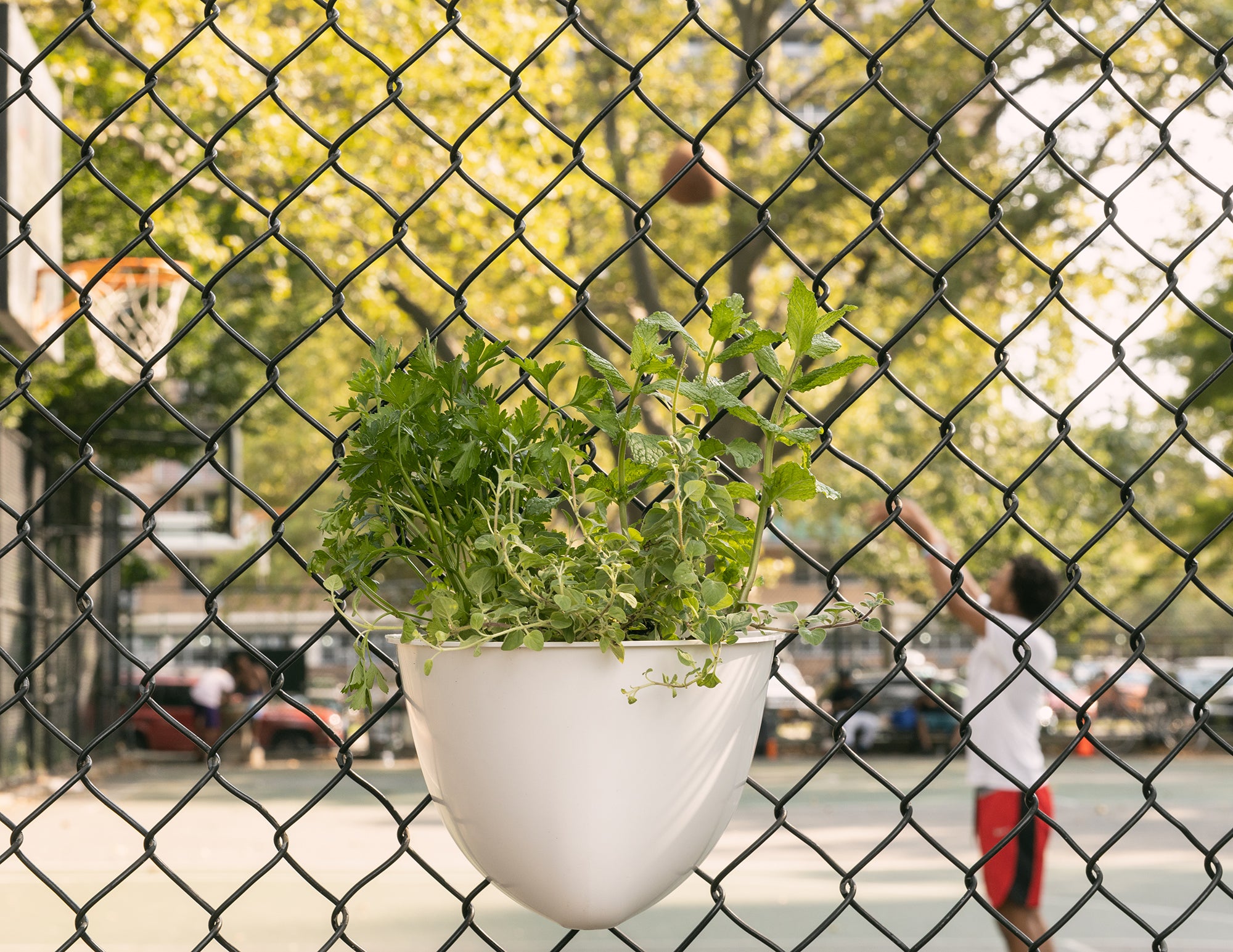
By Bryan Meador
Start Small, Grow Tall: The Joy of Growing a Vertical Garden One Planter at a Time
Growing a vertical garden doesn't have to be overwhelming, even for beginners. The beauty of vertical gardening lies in its scalability - you can start small and gradually build up. With our recycled plastic wall planters, you can transform any chain link fence, wall, or vertical surface into a thriving green oasis. So let's dive into how to kick-start your vertical garden journey, one planter at a time.

Understanding Vertical Gardens
Before you immerse yourself in the world of vertical gardening, it's essential to understand what it is and why it's taking the urban gardening world by storm. A vertical garden, or living wall, is a garden that grows upwards using a wall or a stand-alone structure for support. Vertical gardens are a fantastic way to maximize your gardening space, especially in urban areas where horizontal space can be scarce.
- Vertical gardens are a great way to introduce greenery into urban environments, improving air quality and beautifying surroundings.
- In contrast to traditional gardens, vertical gardens take advantage of upward space, making them perfect for city dwellers or those with limited horizontal gardening space.
- Vertical gardens can turn any mundane wall or chain-link fence into an eye-catching, lush ecosystem.

Choosing the Right Planter
The first step in your vertical garden DIY journey is choosing the right planter. While there are many options, our planters made from 100% recycled plastic stand out for their environmental friendliness, affordability, and simplicity. They fit perfectly into chain link fences, adding a touch of greenery to otherwise urban landscapes.
- Consider planters made of recycled plastic for an eco-friendly and affordable option.
- If your vertical garden is on a chain-link fence, choose a planter designed specifically for that purpose.
- Planters made from recycled materials like ours not only bring life to any space but also contribute positively to the environment.

Picking the Perfect Plants
When you're ready to start planting, consider the light requirements, size, and growing habits of your plants. Some excellent choices for vertical gardens include succulents, ferns, and vines, all of which thrive in wall planters.
- Prioritize choosing plants that thrive vertically such as crawling vines, succulents, and various herbs.
- Depending on your planter's size, small to medium plants are typically the best fit.
- Consider the specific light, water, and care needs of each plant when planning your vertical garden.

Installation and Maintenance
Once you've chosen your plants, it's time to install your wall planter. Remember to position your vertical garden in a location where your plants will get their required amount of sunlight. After installation, regular maintenance such as watering, pruning, and feeding will keep your garden vibrant and thriving.
- Installation involves securing your planter to the chosen vertical surface, making sure it's safe and stable.
- Maintaining a vertical garden requires regular watering, feeding, and pruning to keep it healthy.
- Check the plant's water levels regularly; vertical gardens can dry out faster than traditional gardens.

Building Your Vertical Garden Gradually
One of the greatest joys of vertical gardening is watching your garden grow and evolve over time. Start with a single wall planter, and as you gain confidence and experience, gradually add more. The beauty of vertical gardens is that they're modular – you can add, remove, or rearrange planters as you wish.
- Begin with one or two planters and gradually add more as you gain confidence.
- Gradually expanding your vertical garden allows you to experiment with different plants and arrangements.
- Remember, vertical gardening is about growing and learning, so take your time and enjoy the process.

The Environmental Impact
Embracing vertical gardens and using recycled plastic planters doesn't only benefit you. It's also an act of environmental responsibility. Vertical gardens reduce CO2 levels and help mitigate the urban heat island effect. Using planters made from recycled plastic, you're contributing to a circular economy and reducing plastic waste.
- Using recycled plastic planters helps to reduce plastic waste, contributing to a circular economy.
- By incorporating vertical gardens in urban areas, you can help to lower temperatures and combat the urban heat island effect.
- Vertical gardens can also improve air quality by absorbing CO2 and releasing oxygen.
Starting a vertical garden might seem daunting, but with a bit of planning and the right materials, anyone can create a green retreat. Whether you're an apartment dweller, a school looking to educate students about gardening, or a business wanting to liven up your office space, starting small with a single wall planter is the way to go. Happy gardening!
